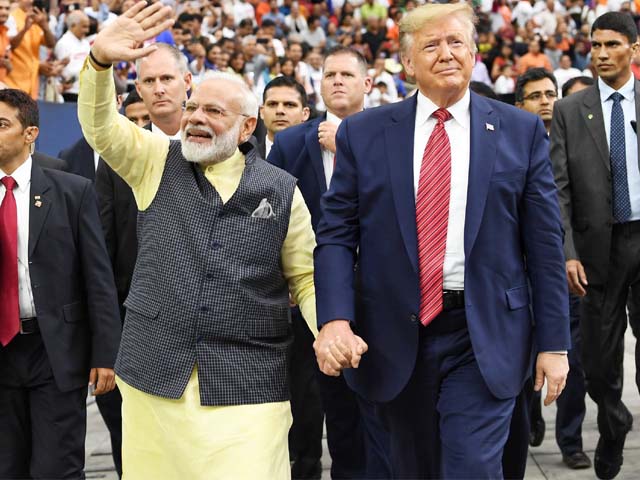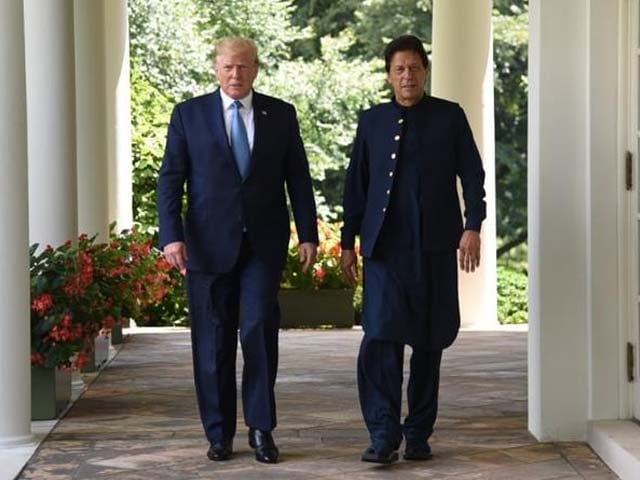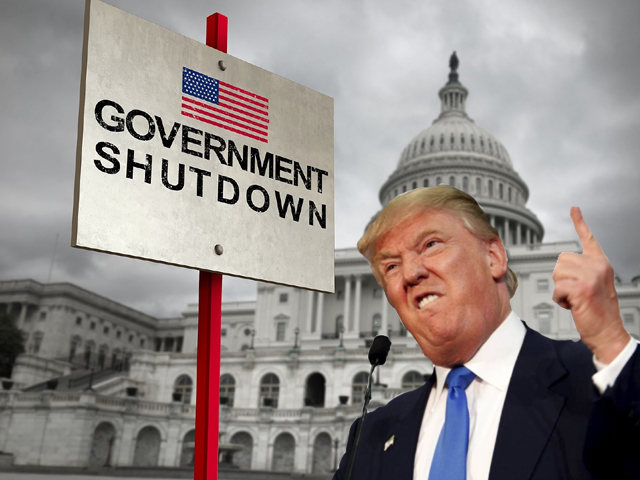
India and Pakistan must stop playing with SAARCs future
Failure to realise the consequences of ongoing hatred could lead to a nuclear conflagration of disastrous proportions.
So despite the extraordinary efforts of Nepal, host of the 18th South Asian Association for Regional Cooperation (SAARC) summit, to ‘pull aside’ Narendra Modi and Nawaz Sharif to ‘crack the nut’ and ease tensions between the two South Asian neighbours, it appears that a meeting between the two leaders will not take place after all.
Thanks to the belligerent and nonchalant ways of India and Pakistan, SAARC, as an organisation, finds itself at crossroads, faced with a crisis of identity and an inability to make an impact on the people of the member countries. Even after almost four decades of its existence, it, undoubtedly, has yet to come of age.
The post-World War II history of relations among the major nations has shown that whereas the mad race for arms build-up led to mass destruction and great economic loss, increased economic linkages and the right attitude are the most powerful instruments in resolving issues for achieving peace. Such disasters have taught us that real security comes from increased national wealth and enhanced understanding and not from huge arms imports.
It is unfortunate that for far too long the people of South Asia have been kept hostage to the political expediency of their leaders, militaries and religious fanaticism, and continue to live in a constant state of conflict and confrontation. It is indeed true that the two South Asian powers have several core issues that remain unresolved. The major bone of contention is obviously Kashmir that has proven to be the biggest roadblock in the way of normalisation of relations between the two countries.
Such obduracy has forced them to allocate a huge share of their respective budgets to the defence sectors. Imagine how great an impact could have been if these funds were instead used for the development of social infrastructure, health, education and other amenities during the past nearly 70 years. Similarly, increased trade and economic cooperation within the region, comprising over a billion people, could bring huge benefits in terms of economic prosperity in the region.
There has to be a check on stereotyping also. Trends and patterns that involve each side accusing the other of interference and aggression need to be stopped. There should be an honest search for new ideas, visions or initiatives among the present policy makers on both sides of the divide. Excuses or pointing fingers at foreign forces or internal elements like ISI or RAW, hold no real grounds for India and Pakistan’s mutual failings.
Both countries are equipped with nuclear capability; failure to realise the consequences of continuing hatreds could lead to a nuclear conflagration of disastrous proportions. Can they, for once, consider the adage of beating the weapons of mass destruction into plough shearers of construction and development? For such an idea to become a reality, what’s needed is a change in attitudes and diminishing of old hatreds and a respect for the integrity of borders, both geographical and emotional.
Ideally, governments of India and Pakistan should carry on with finding amicable ways of resolving the ‘core issues’. Why wait for the other to initiate peace talks? Why not stimulate a process whereby a natural stream of public engagement is kicked off? Why can leaders and citizens not undertake exchanges at various levels? Has anyone ever asked young and upcoming leaders on both sides of the divide as to what they think about South Asia and its people’s future? What is Bilawal Bhutto and Rahul Gandhi’s take on the next 25 years of Indo-Pak relations?
Back in the 90s, when the Chinese economy was gradually opening up to the world, a Shanghai based economist told me something that is etched in my memory till this day. He said,
“While political disputes may continue, side by side economic cooperation should be the order of the day.”
The important lesson to be learnt from Sino-American relations is that promoting economic and technological linkages between India and Pakistan can be the first step towards confidence-building, thus improving security and opening up the possibility of resolving long-standing disputes; hence, moving from the minor to the major premise.
It is hoped that Modi and Nawaz, irrespective of their leanings and ideologies, do understand that there is a feeling of oneness amongst the people of the two countries. I, for one, am a keen believer that we were one people and can stay as one despite being separated by an international border and whatever nastiness has happened in the past. How about, for starters, bringing travel restrictions down a notch and allowing easier mobility of people among the countries of Pakistan, India, Sri Lanka and Bangladesh?
It is nothing but critical that increased interaction and communication must become a norm. The walls of animosity must be brought down. Perhaps neighbouring countries like Iran and China can contribute toward facilitating enhanced interaction between India and Pakistan as well as towards resolving outstanding issues plaguing their relations. Their countries can also be directly involved in other formal inter-regional linkages. It is understood that both, India and Pakistan, have issues in different shape or form with China and Iran, yet, in the spirit of getting things done, some neighbourly assistance is always nice to have.
Here are my two cents to revitalise SAARC:
1. Increased scientific and educational exchanges where scientists and students from member countries can meet on a regular basis and exchange of scientific information, using advanced technology available in the region.
How about development of centres for advanced learning in the field of agriculture, science, business management and administration, government, humanities, etcetera that can be used for the training of students, scientists, government officers?
2. Enhanced economic cooperation and joint undertakings such as in the development of oil and gas prospects encompassing India and Pakistan should be encouraged.
3. Increasing technology transfer initially in the fields of agriculture, environment and ecology, developments of forests, marine and water resources, industry, energy and infrastructure amongst SAARC nations.
4. More sports and cultural exchanges. Pakistan and Pakistanis are starving for international cricket and hockey competition. Granted that there are plenty of security concerns, it wouldn’t hurt if India invites Pakistani sportsmen to break the ice.
5. Simplification of travel procedure among SAARC countries that respects the sovereignty and integrity of each country should be introduced.
As for India and Pakistan, the two countries should work toward a mutually agreed upon level of conventional arms reduction. The saving gained from the arms reduction can be made available for other social and economic sectors which urgently need additional funds to make headway in the field of education, health and other social service sectors. It is believed that such initiatives, and a sincere and mutual desire for establishing trust and peace, would go a long way in alleviating poverty, disease, and other related social evils in the SAARC member countries.
All said and done, even if Modi and Nawaz continue playing hide and seek, and duck opportunities to meet, Pakistan and India must understand that real security cannot be achieved by jacking up defence budgets, pointing fingers or worst still refusing to meet face-to-face, sulking like five-year-old kids.
What’s needed is a perspective, vision and knowledge that only by working out differences in a peaceful and amicable manner can the teeming millions prosper. Leaders of the SAARC states can bring out the best in their people if they are provided with healthy and conducive environments. People are power and if South Asians can thrive and prosper globally, there’s no reason to believe that failure is definitely not an option in their own respective countries.




COMMENTS (103)
Comments are moderated and generally will be posted if they are on-topic and not abusive.
For more information, please see our Comments FAQ